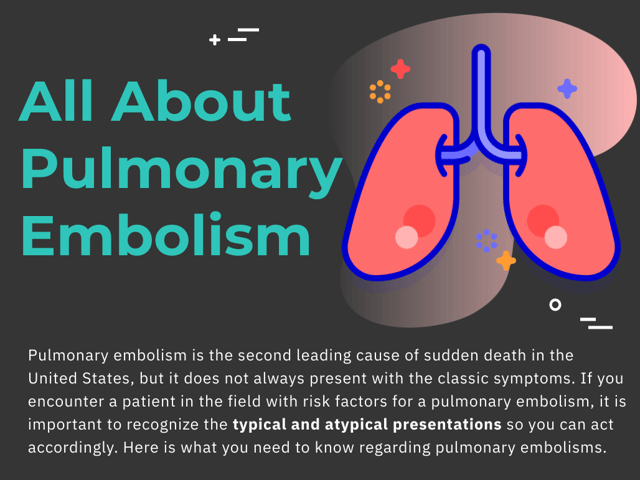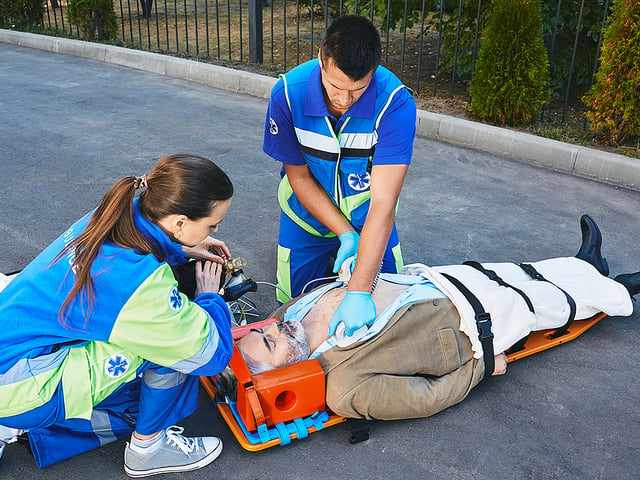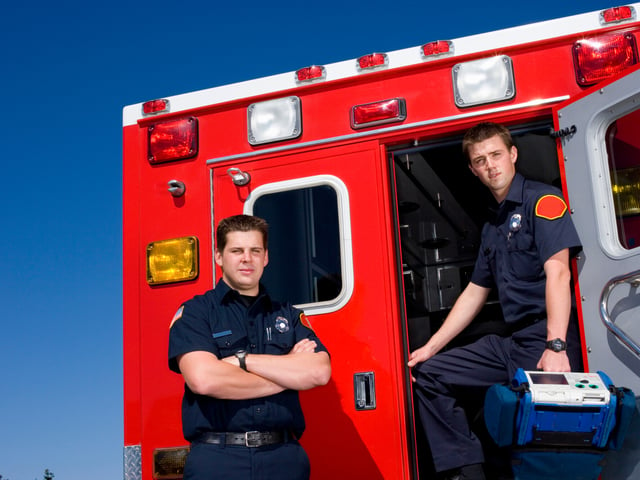
All About Pulmonary Embolisms
Pulmonary embolism is the second leading cause of sudden death in the United States, but it does not always present with the classic symptoms. If you encounter a patient in the field with risk factors for a pulmonary embolism, it is important to recognize the typical and atypical presentations so you can act accordingly. Here is what you need to know regarding pulmonary embolisms.
What Happens during a Pulmonary Embolism?
A pulmonary embolism occurs when there is a blockage in the pulmonary artery. This is most commonly a blood clot that travels from the lower extremities like a dislodged deep vein thrombosis (DVT), but it can also be caused by a fat or air emboli. This blockage cuts off the blood supply to part of the lung, limiting the body’s ability to send oxygen to the rest of the body.
What Are the Risk Factors?
As most pulmonary embolisms start with a DVT, patients at high risk for a DVT are also at high risk for a pulmonary embolism. These risk factors include personal or family history of DVT, recent air travel, recent surgery, and certain medical conditions, such as cardiac disease or clotting issues.
What Are the Symptoms?
The most common symptoms of a pulmonary embolism are trouble breathing, shortness of breath, sharp chest pain, and/or coughing up blood or mucus. However, in some cases, the patient may complain of a sense of anxiety, tachycardia, excessive sweating, light-headedness, fainting, and/or new onset of wheezing.
When assessing a patient in the field, if they are in a high risk category for a DVT and present with any of these symptoms, a pulmonary embolism should be suspected.
What is the Appropriate Treatment?
When a pulmonary embolism is suspected (or confirmed), the initial treatment should focus on improving oxygenation and cardiac output, so oxygen should be administered. A large bore IV should be started, but fluid administration should be done cautiously as it is important to avoid right ventricle overload. In the field or during transport, a 12-lead ECG may help confirm the diagnosis, but the patient should be transported to a healthcare facility for additional testing and treatment.

Keep Reading

Emergency Medical Technician Test Blog
How Many Questions are on the NREMT?
The National Registry of Emergency Medical Technicians (NREMT) exam is …

Emergency Medical Technician Test Blog
How Hard is the EMT Test?
EMTs (Emergency Medical Technicians) are required to have strong medica…

Emergency Medical Technician Test Blog
What Is a Passing Score on the NREMT Exam?
The job outlook for EMTs and paramedics is strong. The Bureau of Labor …